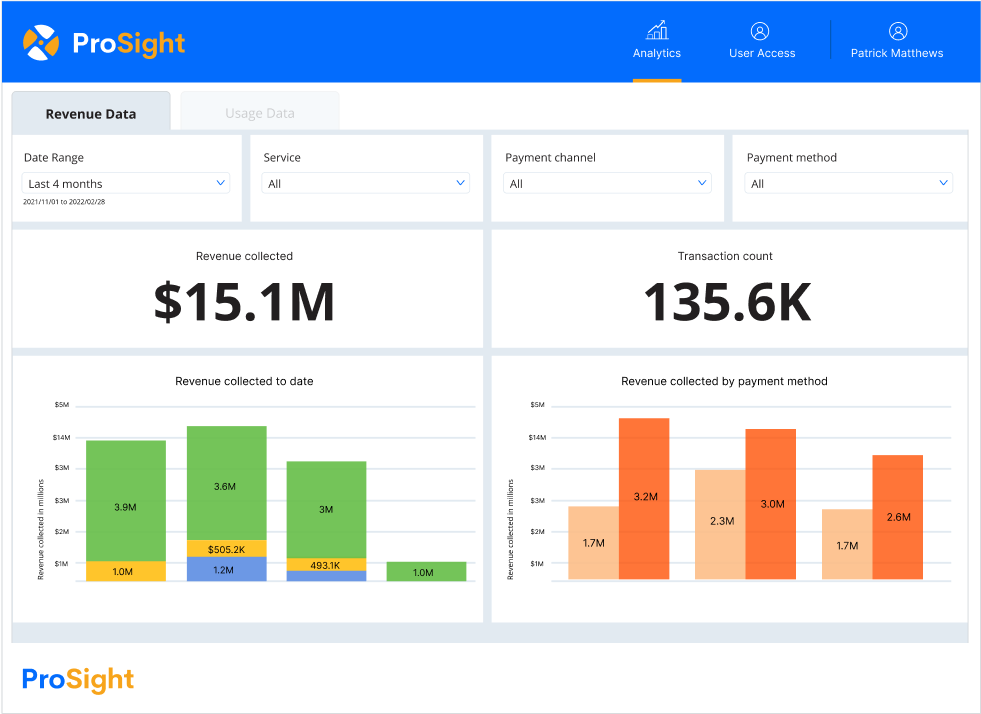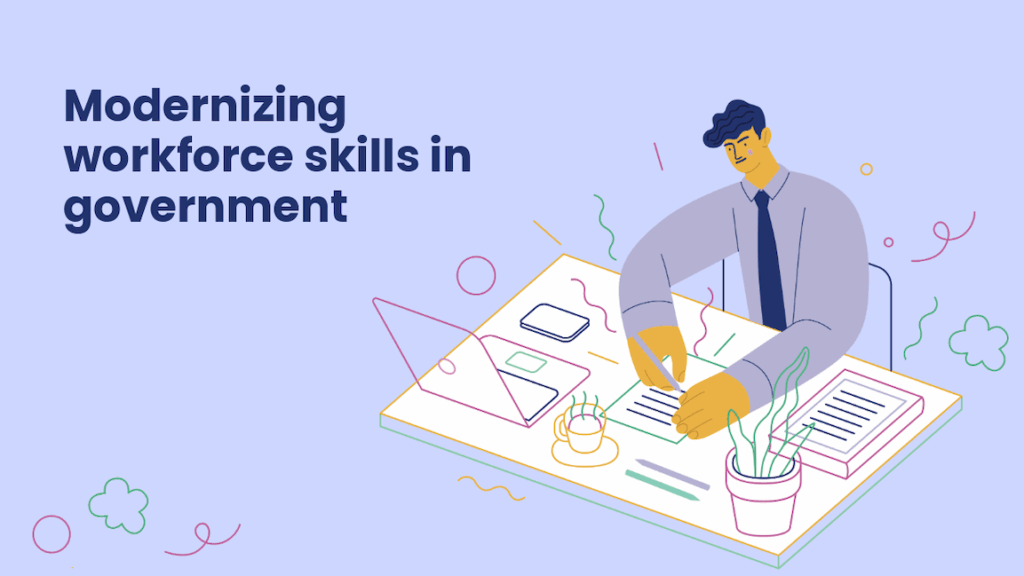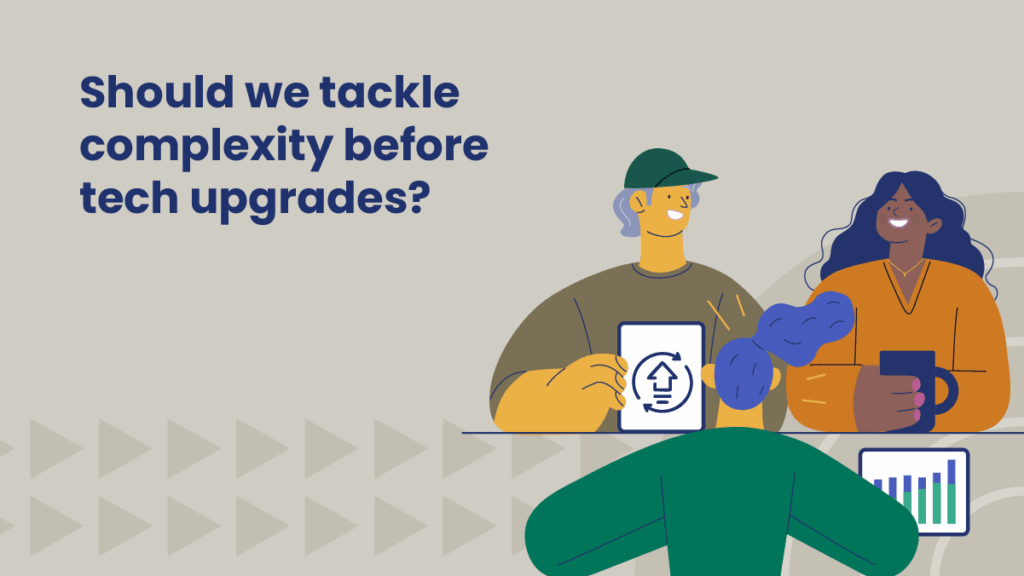4 steps toward modernizing government services
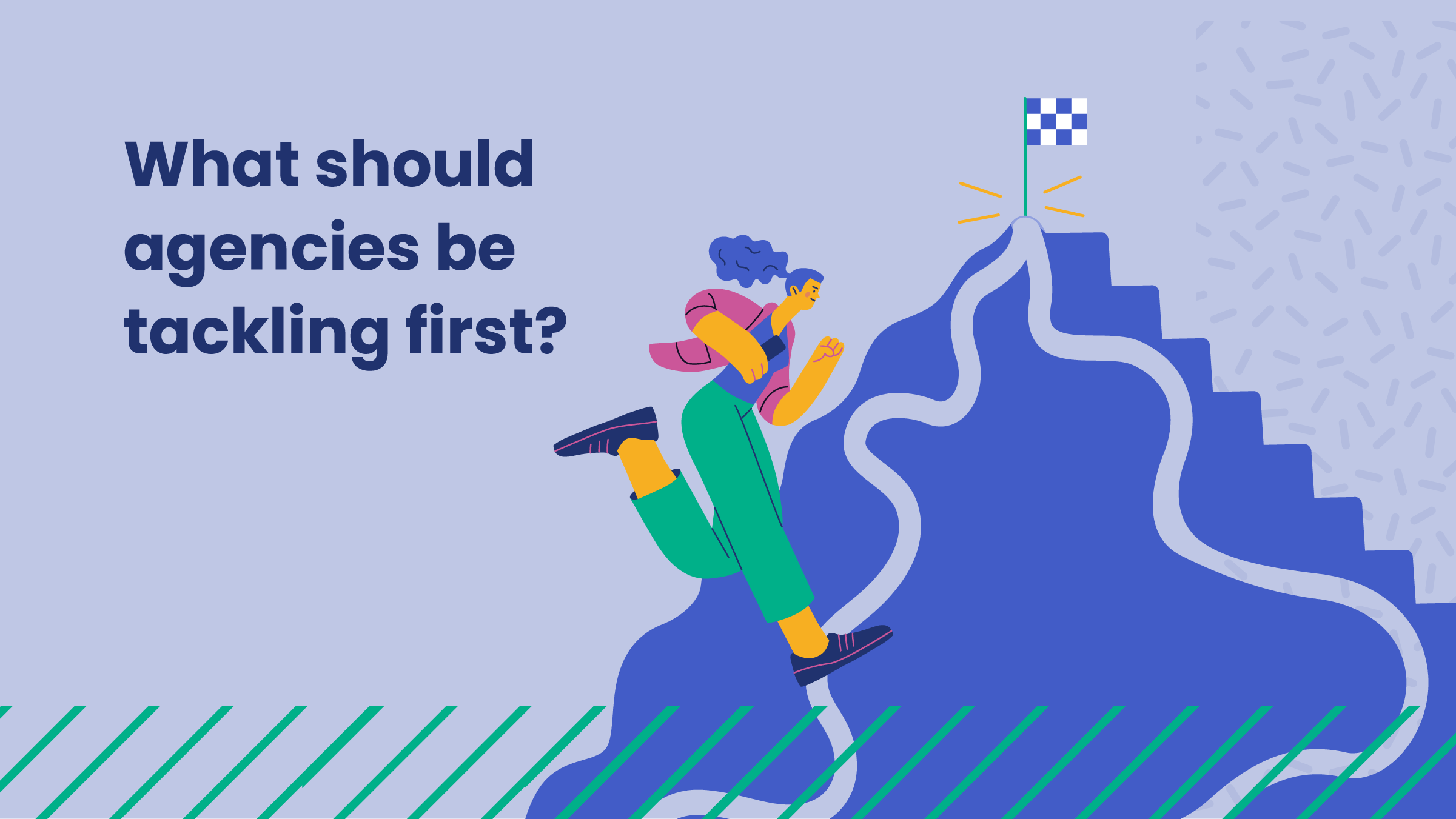
How to deliver a delightful resident experience, even with a legacy back-office system.
Many state and local governments are having conversations about the urgent need for modernization. Forward-thinking leaders are focusing on improving IT infrastructure, back-office systems, and user experiences. But one of the biggest challenges agencies are facing is choosing between modernizing their resident-facing experience or replacing the back-office systems of record (SOR) that support resident and agency data.
What should agencies be tackling first?
Step #1: Separate the resident experience from the back-office system of record.
A simple, user-friendly experience could be the difference between a resident paying their bills online or at their local office — or in some cases, paying late or not at all. But many agencies are still using outdated back-office systems that are costly to upgrade, limiting the type of digital experience that can be provided to residents.
Despite these challenges, there’s still an immediate need to meet resident expectations for a modern experience. Even if agencies have to wait for the resources to upgrade their CRM systems or other backend IT infrastructures, there is a way to improve the accessibility of their current online services and payment systems.
Benefits of tackling front and back end technologies separately.
Agency leaders can separate the resident experience from the back-office SOR by utilizing flexible SaaS software that can integrate easily. It’s the quickest, most efficient way to provide user-friendly web and mobile experiences for residents and allow agencies to remove duplicative workflows, increasing efficiency and streamlining operations.
This approach allows governments to prioritize multiple modernization efforts simultaneously. Quick, impactful updates can be made to the front-end resident experience while the IT team works behind the scenes to upgrade the back-end technology.
Why does that matter? Reimagining the front-end experience provides immediate and visible value to residents. They benefit from day-one — all while back-office upgrades are happening behind-the-scenes. This is one of the major advantages of a SaaS model specifically developed for government use.
Step #2: Focus on improving the front-end experience.
People interact with app workflows dozens, if not hundreds, of times during the course of their daily lives, and they likely never give it a second thought. Whether it’s ordering groceries online, checking their email, requesting a Lyft, or paying a utility bill, interactive workflows guide and automate almost every digital experience people have.
What separates a great experience from a clunky one is how the workflow is presented to the end user and, more importantly, how simple it is for them to complete their task.
This is why decoupling the front-end experience from the back-office SOR is critical for effective government service delivery. In most cases, the front-end experience was an add-on to the back-office system. Legacy IT back-office providers emphasized data storage and security, but the customer journey was an afterthought.
However, a dated digital experience can frustrate residents. Sites that aren’t mobile-friendly or require people to enter the same information repeatedly turn off users, making them less likely to pay their bills on time and leave them less satisfied with their local government.
A better approach to user experience.
Open integrations make it possible to use a layer of simplification between the back-office system and the end user. The result: Agencies can elegantly present relevant data (such as an address, a license plate number, or a parking ticket due date) to residents.
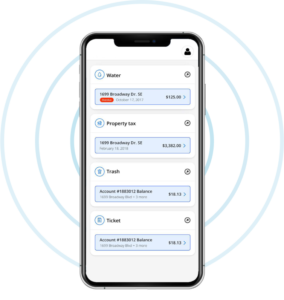
Making residents the center of online engagements is a hallmark of great user design — increasing satisfaction and adoption. In fact, a Forrester report found that better UX design could increase conversion rates up to 400%. Concentrating on the end user helps create a product that’s simple to adopt because it fits naturally into people’s daily lives and solves a problem for them.
Step #3: Utilize an accessible, easy-to-use interface between residents and agency back-office systems.
Some back-office systems offer their own front-end experience, but it’s usually a poorly designed afterthought (think Windows 98 or Netscape Navigator interfaces). Residents, then, are forced to interact with multiple, confusing workflows to pay their bills, upload documents, or schedule an appointment.
The siloed nature of many of these interactions is a pain point not just for end users but government offices as well. At any given time, these SORs could have conflicting or incorrect information, since there is no overarching technology communicating changes across all of these databases.
A modern solution.
PayIt’s cloud-native platform integrates with existing government agency databases, allowing residents to interact with a single interface. The platform then communicates and updates the necessary back-office systems — and if done via API, this is all completed in real-time.
Step #4: Get instant transaction and resident engagement data.
Reporting and administrative capabilities are historically restricted due to a lack of data sharing capabilities. But access to a tool with transaction data and business insights is critical to building a true consumer-grade user experience. It is possible to obtain a unified reporting tool that gives administrative personnel real-time access to transaction information and detailed reporting functionality.
Deploy a best-in-class experience with PayIt, an experienced SaaS partner.
Consumers expect simple, transparent, mobile-friendly interactions, so prioritizing the resident experience is critical for state and local governments. But delivering a great user interface shouldn’t wait until governments complete the long process of updating back-end IT systems.
Being able to deliver digital services more effectively and efficiently means:
- Faster time to revenue
- Immediate decreases in manual processes
- A resident experience that fosters trust and expands access
PayIt’s configurable SaaS platform enables agencies to launch in as little as 90 days, accelerating modernization efforts. This flexibility enables governments to deliver on the expectations of their residents nearly immediately, while the longer and more complex processes of back-office upgrades continue independently.
Read the full whitepaper on modernization here.
Looking for more content?
Get articles and insights from our monthly newsletter.


